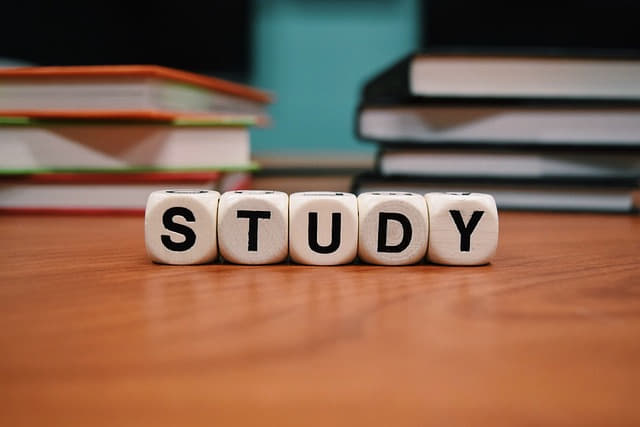Consider the volume of material you read everyday, whether it’s the daily newspaper, its online version, your favorite magazine or books both physical and electronic. Consider too the number of emails you read everyday and despite that, the number of unread emails sitting around in your inbox, be it personal or work-related. Also, why not add into the mix the numerous data and reports that flood your desk – if you’re a manager at work – that you not only need to read but to understand.
Whew, that’s quite a load, isn’t it?
Considering that reading is one of the primary ways to learn, we need to accept the fact that it’s not practical to apply the SQR3 technique all the time. That’s the ideal but let’s face it – we live in fallen world that isn’t perfect and at times, there’s a need to read more material than there is available time. So what are we to do?
We need to read much faster – but effectively too.
Speed-reading is an important learning skill to acquire as it can help us cover more learning materials with less time. It’s a great help in acquiring much knowledge that’s needed to get ahead in today’s very competitive world. As mentioned earlier, SQR3 is the ideal and preferred reading technique for optimal learning. That being said, speed reading shouldn’t be applied to reading materials that contain a great deal of important details, particularly legal documents. In such documents, missing out or misinterpreting just an iota of detail can prove to be very costly later on.
One of the reasons that most of us aren’t able to read at optimal speeds is poor reading habits. There’s good news and bad news about it, but let me start with the bad news so the good news really sounds good. The bad news is that such habits are so sly and deceitful that most of us hardly ever know we’re guilty of them or that they’re bad habits reading habits to begin with! The good news is that just like most insidious and inconspicuous villains in the movies, they can be overcome. And when we overcome them, we can significantly increase our reading speed and accelerate our learning.
POOR READING HABIT #1: SUB-VOCALIZATION
The first reading habit that keeps us from reading at optimal speeds is subvocalization. This is our habit of saying each and every word we read mentally. Let me guess, that’s how you’re reading this e-book now, eh? You may be wondering what the heck is wrong with reading every word mentally? At least I don’t bother the person beside me. Here’s the things: trying to keep pace with our mind’s “voice” tends to slow down our reading.
It’s no different from reading texts verbally – word by word. Its because our minds can read significantly faster than our lips and hence, mentally “saying” them has the same mental reading effect as reading materials aloud. How do we turn off that voice inside our heads? First thing is to acknowledge that we do sub-vocalize. We can’t correct something that we don’t acknowledge to be real. Upon doing that, we simply decide to “silence” that reading voice. No frills, no fuss and no magic voodoos needed.
We just simply choose to read as fast as we mentally can, eschewing that reading voice inside our minds. In time and with practice, it becomes our new reading habit, albeit a good one. Another approach to quitting the sub-vocalization habit is through reading in blocks of words. We’ll look at how to do that in more detail later on.
POOR READING HABIT #2: WORD READING
The next poor reading habit that constricts our reading speed is reading each and every one of the words in our reading materials. What I’m trying to say is reading this text exactly – how – you – are – doing – now, – going – through – each – and – every – word.
We can’t really blame ourselves now, can we? After all, we were all taught how to read in preschool by doing this – word for word. There’s nothing wrong with that – at that age and stage. Unfortunately, no one was kind enough – or wise enough – to tell us to ditch the practice once we learned how to read. We carried this habit all the way up to this point in our lives and unfortunately for many others, to their graves. Consider this example that you’ll read in 2 different ways:
● I;
● Will;
● Ride;
● My;
● Bicycle;
● All;
● The;
● Way;
● To;
● San; and
● Jose.
Now read the same word cluster like this:
I Will Ride My Bicycle All The Way To San Jose
Which of the two was easier to understand and faster to read? I rest my case.
POOR READING HABIT #3: EYE MOTION
You may not be aware of it but the way we move our eyes when we read significantly affects our reading speed. One poor way of moving our eyes was the previous poor reading habit. The other one is reading each text line in one singular and continuous movement, unable to utilize peripheral vision for reading words at the start and end of each line of text. People who are adept at speed-reading don’t move their eyes this way. They read word blocks instead of individual words and by doing so, only move their eyes once or twice along each line of text instead of reading each and every word.
POOR READING HABIT #4: REGRESSING
This habit refers to our tendency to frequently go back to what we’ve already read – and this can significantly slow down our reading. Although doing this every once in a while can be helpful, particularly for complex ideas, doing this frequently isn’t. Not only does it slow you down but that it breaks your reading momentum, which can give you a very challenging time in terms of getting the gist of your reading materials’ structure and consequently, your ability to learn the materials. I highly discourage this habit but if you really need to go back tocertain points in your reading material for learning’s sake, do so sparingly.
One way to reduce your regression tendencies is to use an object like a pen (with caps on), your finger or an unsharpened pencil to mark your eyes’ stopping points along each line of text you’re reading. Doing this gives your eyes something to follow and overcome the poor reading habit of regression.
POOR READING HABIT #5: BEING DISTRACTED
Have you ever experienced reading something with either the TV or the radio on? How’d that work for you? Chances are, you weren’t able to really absorb or learn that which you were reading, right? Even if for some mutant reason you were able to understand some of it, you know that you could’ve done better if you read without the TV or radio on. Simply put, we need to optimize our reading environment if we want to be able to read effectively and fast.
The best environment to do that is one that has the right temperature, adequate lighting and is silent. Such an environment will really help us focus on what we’re reading. Avoiding distractions is like dieting – it’s simple but not necessarily easy. The primary reason for this is mental. Often times, we crave distractions and suffer separation anxiety when we get rid of them. C’mon – don’t tell me you find it hard not to listen to One Direction or Metallica when reading? Remember, liars have long noses! The only solution really is will power. As Nike always says – just do it!
One ray of hope is that on average, it only takes about 21 straight days of practice to break old habits and acquire better ones. So think of it as just a 3- week boot camp. After that, you’ll find yourself asking “Why didn’t I do this before?” More than physical distractions, the more challenging ones to get rid of are mental ones. With physical distractions, we can simply set up our rooms or go to a place that’s conducive for optimal reading but internal distractions tag along wherever we go!
You’ll need to wage constant battle for the next 3 weeks but after that, you’ll find that it will no longer be a battle. A simple but effective strategy to minimize such distractions in most cases is to take care of personal business before sitting down to read. Often times, it’s those loose ends that distract us mentally, begging us to come hither and fix them! Procrastination is the primary reason for this habit and once again, theonly solution here really is will power. Again, think 3-week boot camp.
HOW FAST (OR SLOW) DO WE READ?
For all our discussion on what speed-reading is and our poor reading habits that get in its way, we haven’t really talked about the central theme of this chapter – reading speed. We won’t be able to know if we’re progressing in our attempts to read faster if we don’t know how fast (or slow) we’re actually reading. It’s like the impossibility of staying within the speed limit at the Autobahn with a broken car speedometer.
To know your current reading speed, do these:
● Prior to reading, count your materials number of words, which should be much easier if you’re utilizing a word-processor like Microsoft Word or Mac’s Pages. But if your reading material is on paper, a good estimate would be to get the average number of words per line for the first 2 lines of text and multiply it by the total number of lines in your reading material.
● Read the whole material while timing yourself. As soon as you’re finished, divide the material’s total word count by total time it took you to finish reading – in seconds – and divide the resulting figure by 60. This is your estimated reading speed expressed in words per minute or WPM. At this point, you have now established your beginning or baseline reading speed from which you’ll base your progress on.
● For convenience, there are many online speed-reading tests you can take to estimate your baseline reading speed. Just keep in mind that average reading speeds may differ between printed and electronic material. The important things is to be consistent. If you measured your baseline WPM online, continue measuring for progress online too. If your online reading speed increases, it follows that your printed one did so too.
GOAL SETTING
When trying to improve our reading speed, we need to set goals. Why? Without goals, we won’t have any objective basis for establishing whether or not our efforts have succeeded or failed. It’s no different from backing the car out of thedriveway without any destination in mind. It will just be a waste of time and precious petrol. When setting a good speed-reading goal, what is considered realistic? Here’s a good guide (not a gold standard) as to average reading speeds:
● 200 to 250 WPM for children 12 years old and above;
● 300 WPM for college students;
● 450 WPM for college students who are skimming materials just for the main points;
● 600 to 700 WPM for college students searching for keywords in texts;
It’s worth keeping in mind that the goal of speed-reading isn’t to just “read” as many words as humanly possible within a given time frame. The real goal is to learn as much as possible within a given period of time, as measured in words read per minute. It’s estimated that we can still comprehend as much as 75% of what we read up to 700 WPM and anything higher runs the risk of reduced learning.
A good goal to aim for are increments of 10% from the last most recent WPM. Remember, since the ultimate goal of speed-reading is to learn, you shouldn’t be hurrying things up. Take your time and don’t rush – unless of course someone’s holding a gun to your head and being able to read at a certain speed can save your life. Otherwise, take baby steps and be realistic so that speed-reading can actually improve your learning.
READY, GET SET, SPEED!
Alright – now that we covered the basic principles and concerns of speed reading and have identified a realistic goal, we’ll look at how to actually speed read.
KEEP YOUR (MENTAL) MOUTH SHUT
Remember our discussion on the poor reading habit of sub-vocalization and how we said the only solution really is to zip it? One good way to “physically” shut our mental mouths up is by chewing gum as we read. Why is this such a brilliant, world-changing idea? Well, it’s because chewing gum physically activates the muscles responsible for our being able to speak, which indirectly influence our tendency to sub-vocalize. If our physical mouth is busy chewing gum, it sends the signal to the brain that it can’t mentally “speak” the written word. As such, we avoid sub-vocalizing.
Cool, huh? No gum around? No problem! Simply putting a finger or two on our lips should do the trick as it has the same effect of keeping our physical mouths from “reading” our materials as chewing gum, albeit in a slightly awkward manner.
COVER OPERATIONS
Another way to help us read faster is by covering up the texts or words that we’ve already read, which helps minimize the need for or the tendency to regress – another reading habit that slows down our ability to speed read. One way to do this really well is by using an index card, which is what I personally do, to put a lid on the words I have already gone through. Keep in mind that this isn’t supposed to be a permanent speed-reading crutch but more of a temporary training equipment, so to speak. As such, don’t abuse it and over time, you should be able to ditch it.
EFFICIENT EYE MOVEMENTS
We may think that reading means having to move the eyes but the truth is, we read only when our eyes aren’t moving. Reducing our eye movements’ frequency per reading line can help us read and learn much faster. It’s been estimated that on average, we can read as far as 8 letters to the right of the point at which we fix our eyes and only 4 letters left of the same point. In terms of word count, this translated to about 4 words at most per stop or eye movement. With this, we can estimate our ideal eye movement frequency per line of X number words. Here are some easy exercises to train your eyes to move less while reading:
● Place an index card on the line immediately above your text line of choice. Write an “X” on the index card’s portion corresponding to the text lines first word.
● Place another “X” on the index card, this time on top of the 3rd word after the first “X” for challenging reading materials, after the 5th word forrelatively easier reading materials or after the 7th word for simply skimming through materials’ important points. Draw more “Xs” on the same index card line until you reach the end.
● Start reading as fast as you can by sliding down the index card with the “Xs”. Read each text line by fixing your eyes on points on the text lines that fall under the “X” marks on your index card. Do the same for each line as you slide the index card down. Over time, your eyes will be trained to read with as few movements as possible.
Lastly, do focus on the current text line you’re reading and please don’t pay attention to those below and above it. Doing this helps maximize reading speed.
SPEED BRAIN TRAINING
As I said earlier, speed reading isn’t done just for the sake of reading fast because the real reason for this is to understand and learn as much as possible within a given period of reading time. So more than simply training our eyes, we also need to train our brains for speed. We can look to how runners train for marathons when it comes to speed-training our brains, particularly using the progressive overload principle. Progressive overloading means gradually building up reading speed and comprehension in increments that are just slightly faster than what we can currently understand.
As our brains adapt to the next slightly faster level, we raise the bar yet again ever so slightly and repeat the process several times more until we achieve our desired speed. Doing it this way increases our chances for success while minimizing our risk for burnout and quitting. So how can we do this in real terms? Here’s how:
● Read a text line by moving a pencil from the beginning to the end of it. Say “one 1,000” at a very normal and relaxed speed and the pencil should reach the end of the line only by the time you finish saying it. This becomes your estimated baseline reading speed.
● Continue reading the other lines of text at the same speed. Never mind if at first, you find it challenging to comprehend the words you’re reading. Just focus on reading the other lines at the same speed for about 2 minutes.
● Stop to rest for about a minute then resume reading but this time, do it faster. The speed? You should be able to cover 2 lines of text in one relaxed and normal paced saying of “one 1,000”. Continue reading the next lines at this pace for about 3 minutes.
● Do this exercise for 3 weeks – the average time to build new and kick old habits – and note the improvement in both reading speed and comprehension.
SKIM READING
Skim reading or skimming is another excellent way to build up our reading speed. The top benefit of practicing this is the ability to quickly get an understanding – however shallow – of a particular reading material. This can prove especially useful for extracting the main gist of newspaper feature or get the central details of any submitted reports, to name a few. This speed reading technique, however, isn’t advisable for learning materials that involve a great amount of crucial details, as with the case of legal documents and job postings. So what does it mean, in practical terms, to skim read?
We start by simply reading the materials’ chapter titles and main sections’ headings and subheadings. This is ideal for reading newspaper headlines or the table of contents of books and magazines. It’s particularly useful to me in terms of deciding whether or not to buy a book or magazine within a limited amount of time. We can read an article, section or chapter’s first and last paragraphs, particularly their first and last few sentences, for a relatively deeper skim reading. This can also help us get a good idea of what their main ideas are. When skimming, it’s also helpful to circle words that we think are helpful for understanding the material. These words include proper nouns, unfamiliar words, words in different-styled fonts, repeated words and main points/ideas.
VISUAL REPRESENTATIONS
Since a picture paints thousands of words and our minds think better in pictures, then it follows that looking at visual representations of reading materials’ contents is a very effective way of skimming through their main points. This is one reason why most annual financial reports of large corporations incorporatenifty looking graphs and tables into their professionally written material. Simply looking at a pie chart, for example, immediately shows us what department accounts for most of the company’s income for the year without using more words than what is needed to simply identify the departments.
Graphs can also come in handy for when it comes to skimming, particularly if we’d like to see a particular subject’s performance over a span of time. Without even needing a whole paragraph, we can already learn that subject’s multi-period performance just by looking at a graph. Charts, pictures and diagrams allow us to skim and immediately get the main points of our reading materials without having to go through pages of highfaluting write-ups. Talk about efficient learning, eh? Just a friendly neighborhood advice – these visual representations, although effective, are only so up to a certain point. In particular, they’re great for extracting main points or ideas but not for getting a deeper understanding of such. Learn to use them wisely for accelerated learning.







